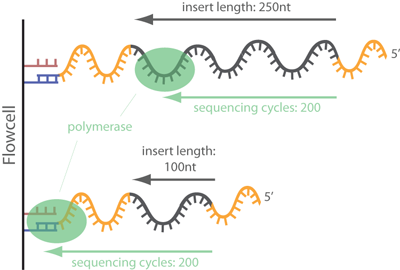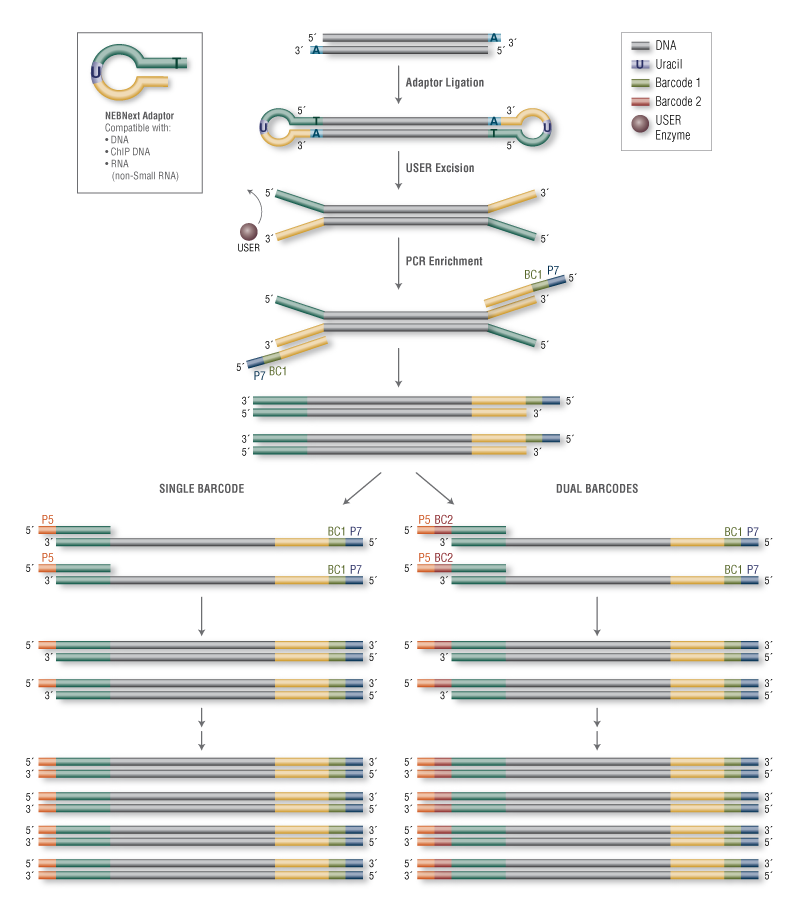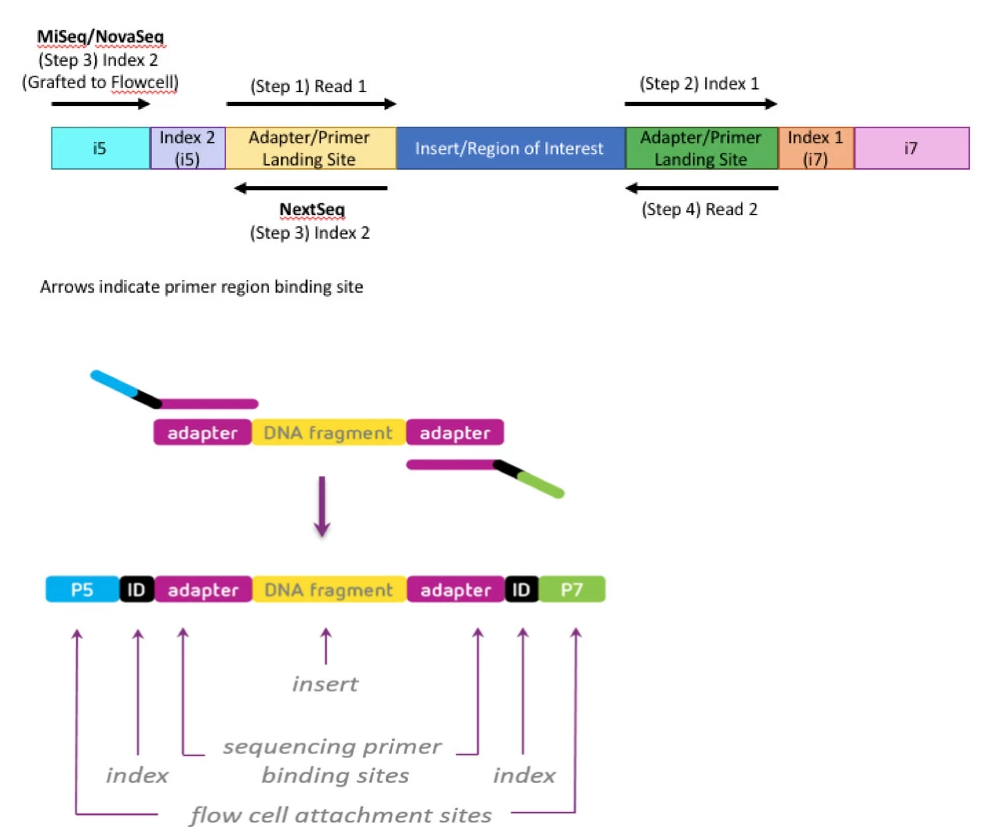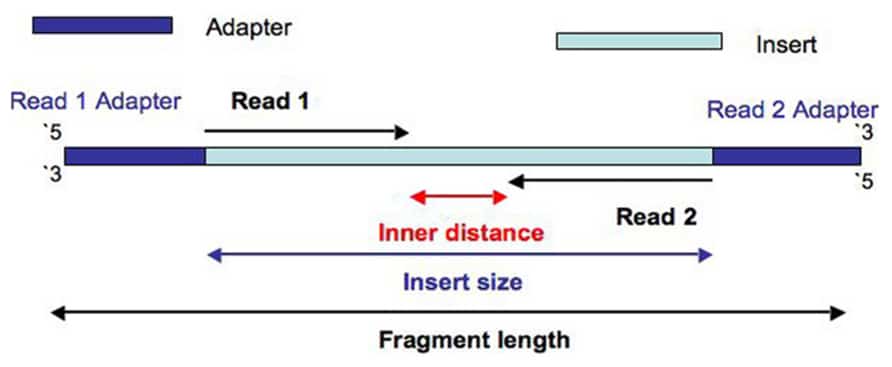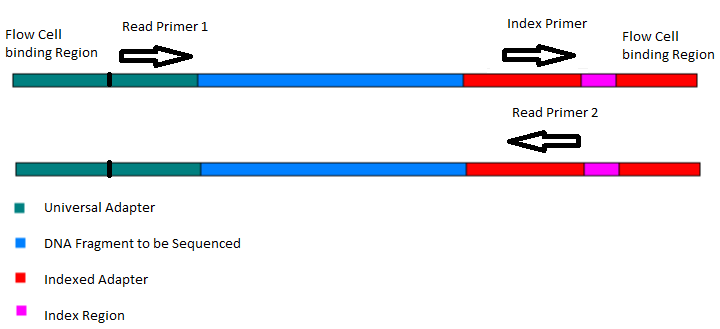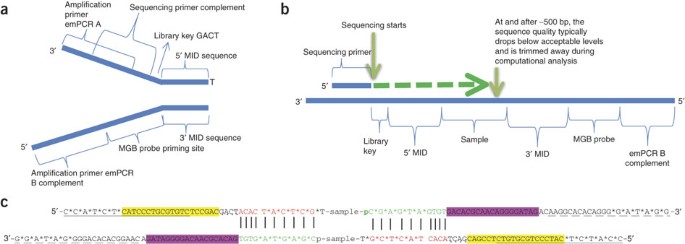
NGS Adapters in Ligation-Based Library Prep Workflows | Biocompare: The Buyer's Guide for Life Scientists

Biology | Free Full-Text | FLEXBAR—Flexible Barcode and Adapter Processing for Next-Generation Sequencing Platforms
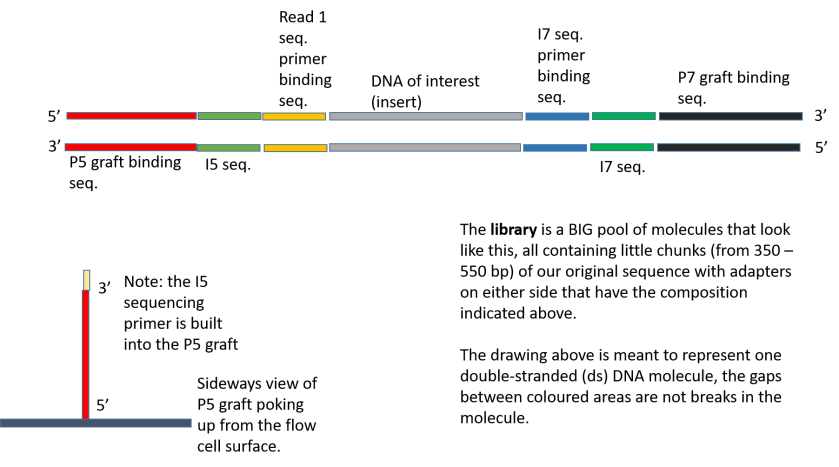
Illumina Sequencing (for Dummies) -An overview on how our samples are sequenced. – kscbioinformatics
High-Throughput, Amplicon-Based Sequencing of the CREBBP Gene as a Tool to Develop a Universal Platform-Independent Assay | PLOS ONE
4-A scheme of targeted fragment being sequenced Sequencing adapters... | Download Scientific Diagram
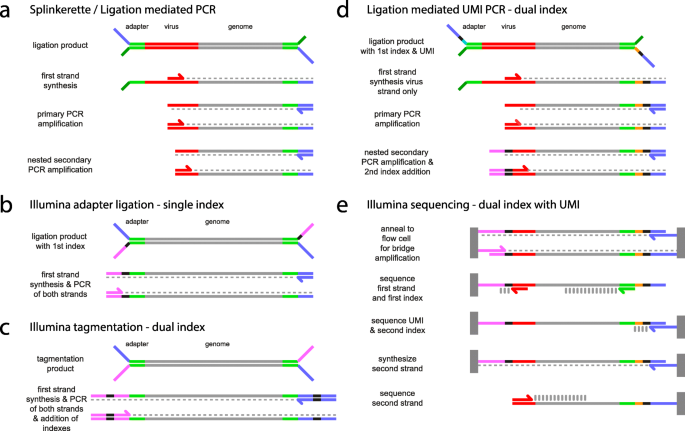
LUMI-PCR: an Illumina platform ligation-mediated PCR protocol for integration site cloning, provides molecular quantitation of integration sites | Mobile DNA | Full Text

Biotech7005 | The practical material from the course Biotech 7005: Bioinformatics and Systems Modelling

Overview of the different methods used for adapter addition to antibody... | Download Scientific Diagram



